

You're planning your new home and the only thoughts that come to mind are the appliances, layout, fittings, gadgetry and just so many other things! What about the windows, doors and façades?
An important aspect when making your new house a home is your choice and specification of windows, doors and façades. Your choices made now will be pivotal for years to come. And if properly chosen, you make your property more secure, family happy and your way of life more sustainable.
Moreover, your selection on windows and doors actually affect the functionality of your home, whilst given the different kinds of seasons that come and go, the glazing largely determines how light, comfortable and welcoming your home could be.

The placing of windows, doors and their design will be among the first things your architect considers and you should too! Choosing to make decisions room by room would benefit rather than adopting a one-size-fits-all approach.
What materials should they be made from? Aluminium, PVC-u and timber all fulfil the required function yet aluminum is widely pre-ferred for homes due to its great design flexibility, high endurance and sustainability over other materials.
Next to consider- the width of the glazing bars and depth of the frames. Narrower frames and bars let in more light but are generally slightly less robust.
Then you have the decision on the shape and opening of the windows. Should it open inwards, outward, tilt or turn? Need the glass be tinted or clear?
The same applies to doors opening onto the terrace. Should they slide back or incorporate a lifting action to ensure better weather-tightness?
How can the choice of windows and doors affect your comfort?
The fact being, the right combination of glass, frame, gaskets and locking mechanisms will produce a draught-free environment and consistent temperature in your room regardless of the weather conditions outside.
A window equipped with integral sun shading can simultaneously solve the problem of solar glare and deliver a great degree of privacy from neighbours.
Then consider the problem of noise. Windows that deliver a high degree of acoustic insulation can solve that problem forever.
And of course the automation of windows could give you a whole new level of comfort.
So, choosing the right window means receiving more than just ventilation and light.
And choosing a flush threshold could ensure nobody trips.

Home! It's where you are at ease, a calm environment that you are most relaxed in. To experience unmatched serenity, do it with our new-generation sound reduction windows and doors. This is made available with a wide range of intelligent frame and glass combinations just for you.
The Panorama sliding door systems offer an open and wide view of an extensive area. We at Craftsmen have designed to accommo-date the widest spans with the slimmest central interlock and completely concealed outer frames with the views beyond them. Every panoramic door includes hard-wearing integral rollers concealed within the profile of each shutter. This allows the shutters to run easily despite being very large.
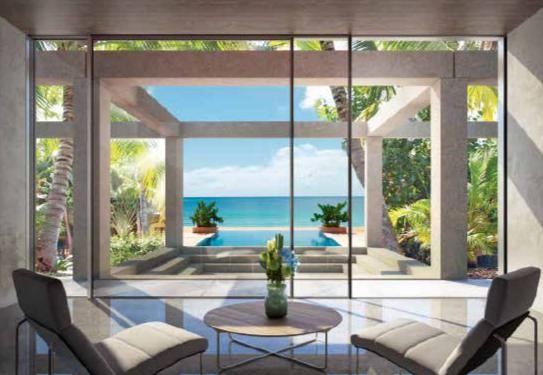
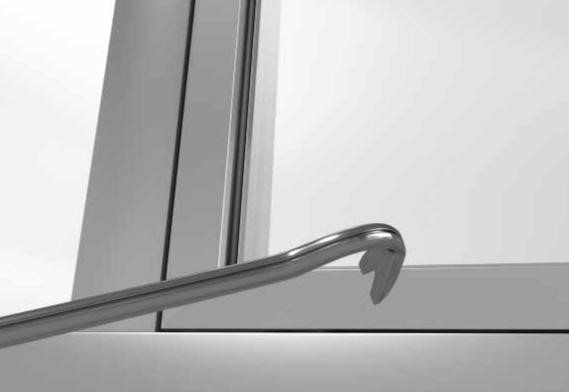
Feeling secure is about the certainty that you are protected. Be it from the weather or burglars, our systems ensure security in a concealed yet highly effective way. Craftsmen aluminium windows with the internal 'AvanTec SimplySmart' fitting provides a high level of basic protection that can be increased to resistance class 3 (RC3) with the help of additional locking points.
What materials can you use to stop heavy impact on your energy consumption and costs? Aluminium can be recycled while wood can only be effectively carbon-neutral if not treated. Wood insulates well but needs regular maintenance while aluminium is maintenance free and when supplied with the correct level of insulation, can deliver impressive thermal performance.


Aluminium fire protection doors and screens don't depend solely on hinges, locks and closers but also on the glazing element. The interface between the framing and the wall is an important aspect which is often ignored. Craftsmen offers new-generation fire and smoke protection systems, simply well-conceived with extremely narrow face widths. Our fire protection products are independently tested and assessed to ensure their functionality, safety and security.
As we've already suggested, the right choice of glazing can actually lead to lower energy consumption and greater security. It can also make your home quieter and more comfortable. Tinted glass can add visual style and combat solar glare.
Depending on the climate where you live, the thermal performance of the glass can be crucial too. Some regions require doors, windows and glazing to offer high-performance insulation to keep the house warm in winter.
In summer, particularly in northern regions, the glazing's response to solar radiation is the critical factor because the emphasis is on the need to cool the house. Temperate regions obviously need glass that can deliver a combination performance.
Let's look at some types of glazing in more detail and remind ourselves that different rooms may require different glazing.
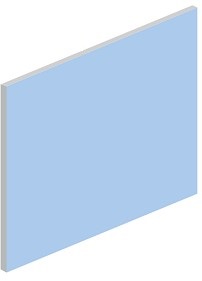
One pane of glass delivering minimal thermal performance. It lets in light but it also lets in heat and does little to keep out the cold. It means increased costs for air-conditioning and heating.
This type of glazing is most appropriate for environments with all-year-round warm temperatures where windows and doors are closed only to keep the rain out or conserve heat on a few chilly days and nights.
Two layers of glass permanently bonded together with a resin/film interlayer in-between. If struck hard it will crack but not break into pieces because of the interlayer, which can also be frosted to provide privacy.
Depending on the characteristics of the various types of interlayer, it can help to dampen noise and can provide a measure of solar control and protection from harmful UV rays.
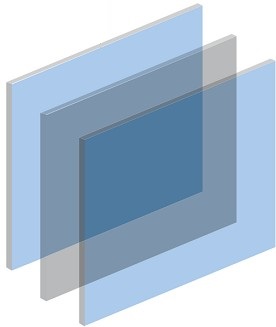
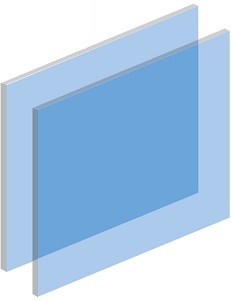
Two panes of glass bonded to a perimeter spacer made of metal or thermoplastic, with either air or special gas filling the space in-between.
Its dual-pane construction makes it relatively secure but, most importantly, it can provide a large measure of thermal insulation and noise reduction.
The characteristics of this type of glazing are almost endless because by using different coatings and interlayers and different fillings in the cavity between the panes, you can achieve pretty much any result you want.
Similar construction to double glazed but utilising three panes of glass. This configuration delivers the highest levels of thermal performance, noise reduction and burglar resistance.
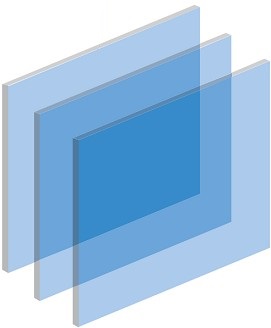
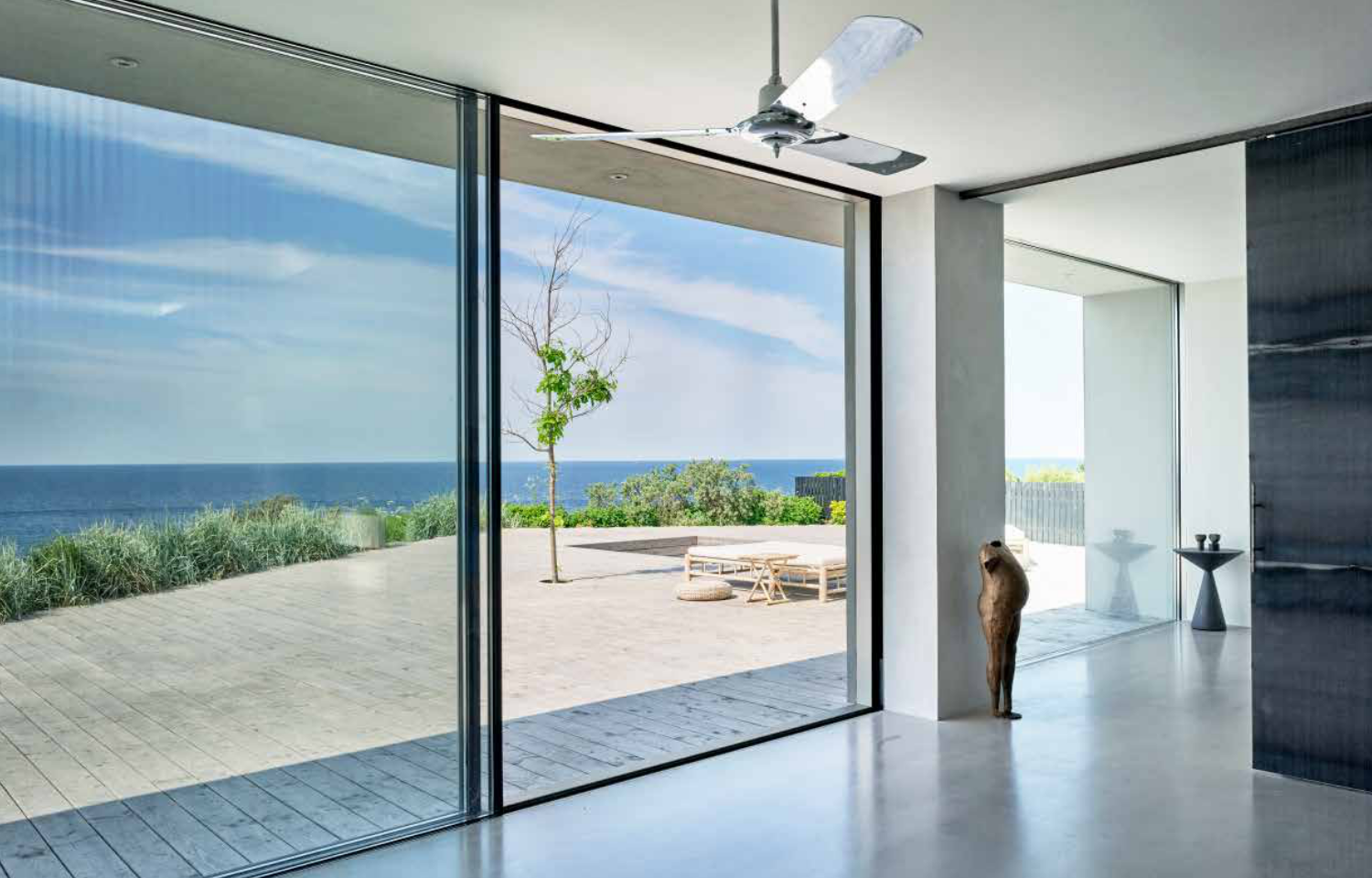
In fact, the frame around a window, door or other glazed area has as important a role to play as the glazing. Imagine fitting low-performance tyres to a high-performance sports car. You'll still have loads of power, but it won't look as good and most importantly, the car won't accelerate, corner or brake as well as it should.
Design matters too. Because, as we've already established, the look of a property can be changed totally by the appearance of its windows and doors.
Bear in mind that it is the combination of the glass and the frame that determines the performance of the whole unit in almost every aspect. So, once again, the choice of frame will seriously affect the outcome for every individual window and door and consequently for your complete home.
These technical details should be considered alongside such personal preferences as touch, aesthetics, sightlines etc.
So let's look at some typical types of aluminium framing available
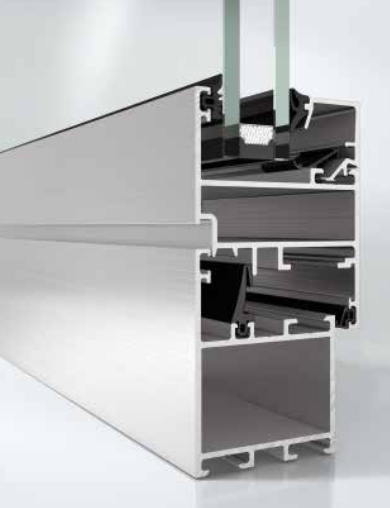
A type of frame that has been around for over 50 years. It's tried and tested but provides minimal insulation.
This is technically and price-wise a low-end solution, usually combined with single glazing. It is suitable for use in secondary glazing, internal partitioning and in all-year-round warm (although not hot!) climates.
This has been a successful design for 30 years and is now a technology standard in most of the developed world. The thermal break (insulating the outer aluminum shell from the inner one) allows it to achieve good 'UV' values and noise reduction. Its improved thermal performance means lower air-conditioning or heating costs.
A further advantage is that with thermally broken windows you can usually choose different colours for the inside and the outside of the frames.
To gain the full benefits of this framing, it should always be combined with a double glazed unit, a combination that can slash your energy loss or heat gain by up to half when compared with the performance of a single glazed, non-thermally broken window.
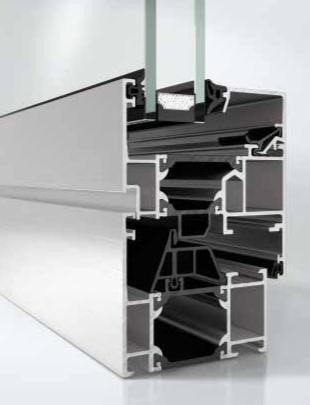
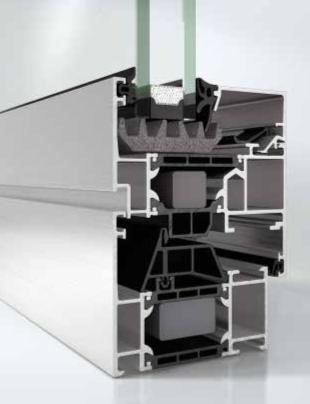
Improved insulation is achieved by means of adding insulation into profile chambers, glazing rebates and introducing additional gaskets.
This frame is the result of recent improvements in technology, driven in part by government-led initiatives to combat climate change by reducing energy usage.
Its impressive thermal performance (almost double that of a standard thermally insulated frame) helps to minimise a building's carbon footprint.
One would normally combine these frames with high-performance double glazing or even triple glazing. Again, energy loss or heat gain will be halved over a standard thermally broken frame.
Some might say not, yet in terms of appearance, functionality and the location of windows, the method of opening can make a real difference. Which means that it's worth thinking about the choices on offer. Here are just some:

By its very nature, this is obviously the most weather-tight window available. It is ideal for illuminating dark corners and areas such as stairwells and landings where there is need for light but not fresh air.
With only an outer frame required, these windows have the most slimline appearance possible and can offer high security (subject to the glass chosen).
This window is hinged at the top and opens outwards. Usually relatively small in size, it can be left open at various angles to admit fresh air even during light rain.
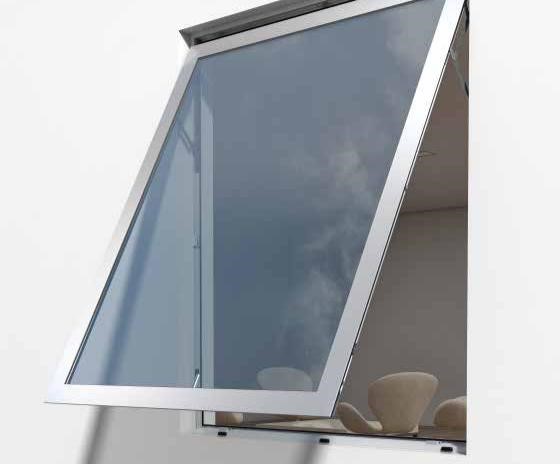
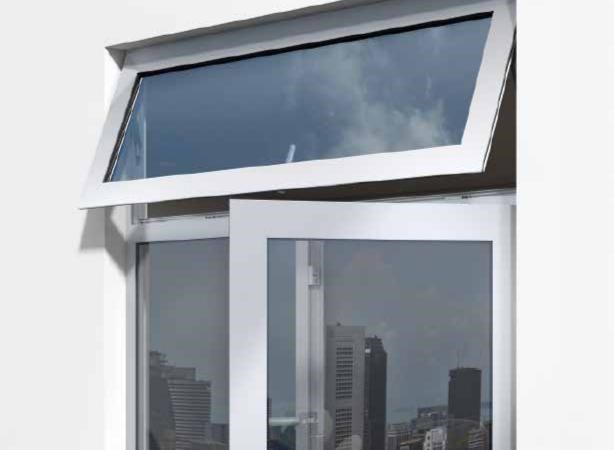
This window is hinged at the side and opens outwards and/or inwards. These are used singly or in pairs and, when open, they give maximum ventilation.
It offers unobstructed views with usually a much larger transparent area than the awning type, when opened.
A sliding window is effectively a small version of a sliding door. It is easy to open and close and allows a lot of clear space in a relatively small area.
Flyscreen can be added to this type of window. Opening can be restricted by the introduction of additional locking features, which have the merit of providing a better level of security.
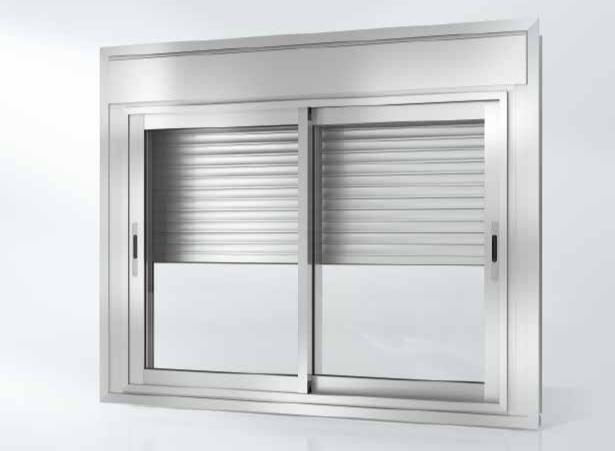
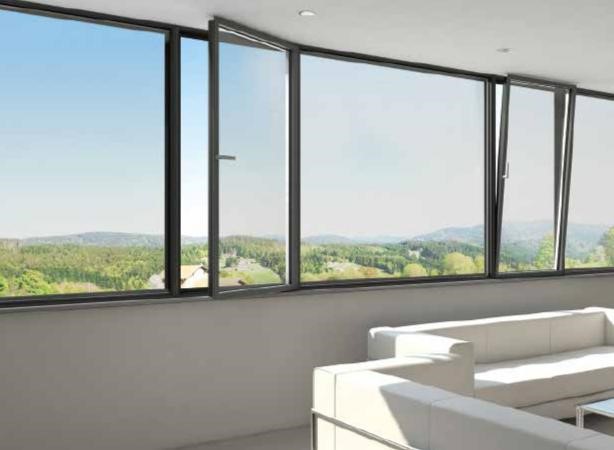
The window opens in two different ways. One option allows the vent to tilt inwards, much like an inverted top hung window, but hinged at the bottom to admit fresh air at the top. Alternatively, the side hinges engage and the window opens as a normal casement type but opening inwards.
Its ingenious design makes it easy to clean both sides of the glass. In tilt-mode, it provides ventilation, even in heavy rain, while still meeting safety-related opening restrictions. Opening scissors and hinges that are difficult to access from the outside also give increased security.
In 'turn' function it delivers all the advantages of a casement window, but with flyscreens/security screens installed outside
Plenty - if you know what you're looking for and where to look for it. Because windows vary very considerably in terms of looks and in terms of performance. Here are some key features:
The shape of a profile is what makes a window distinctive. A hard-edged profile gives a hi-tech look, round edges produce a softer appearance. Fully flush concealed vents disappear into a glazed facade making it impossible to tell from outside which elements open and which are fixed.
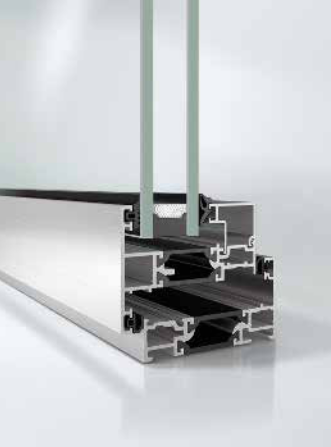
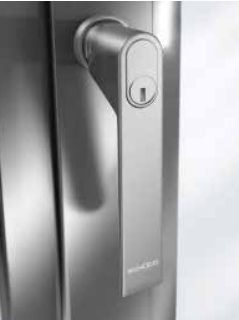
A handle doesn't just have to be useful, it should be decorative too, a perfect combination of form and function. And when it comes to securing your home, a (key) locking option as well as automation (where access to a normal manual handle is difficult/impossible) should always be considered.
Handles come in a variety of designs - straight, curved, cranked - but one thing you cannot afford to do is to neglect quality. Window handles take a great deal of wear and tear and poor quality will very quickly show itself.
And remember that handles do not need to be just black or white - they can be made in any colour, in stainless steel, in aluminium or in plastic. They can be positioned to suit your particular height and some may need to be made inaccessible to children.
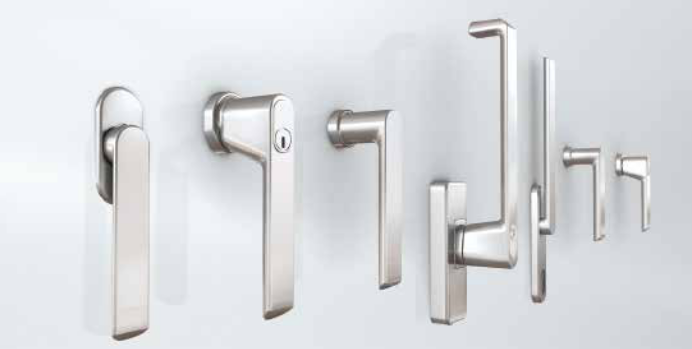

It's surprising the difference small variations can make. Options include different profile shapes and different designs of glazing bead.
Your choice of single, double or triple glazing will affect the depth of the frame and the rigidity of profiles and accesso-ries due to the weight of the glass. The frame will also in part determine the general strength of the window and its acoustic as well as thermal performance.
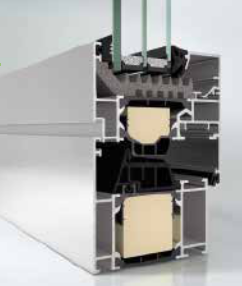
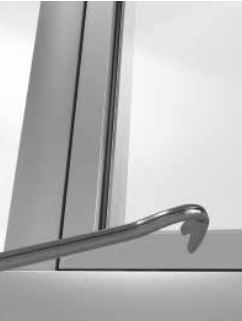
Glazing beads could be positioned on the inside of a window or glazed door. This not only makes for better security (because the glass can't be easily removed), but also means that panes (even on upper floors) can be replaced from the inside without the need or expense of scaffolding.
With some systems, you can ensure that all the window-whatever their shape or size - have a consistent look externally and that the doors look the same as well. Only a detail maybe, but a pleasing one.
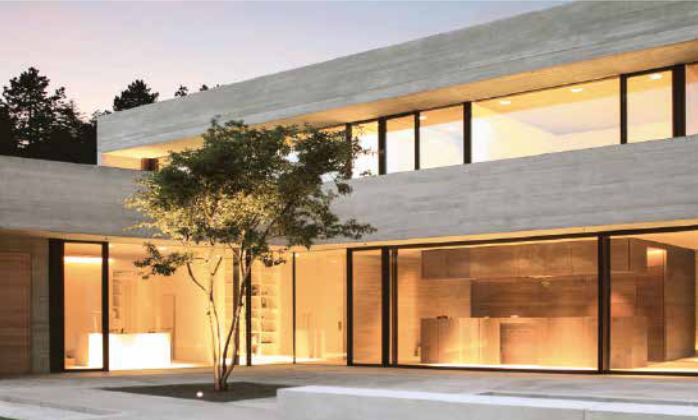
In fact, we all do. It's the first thing we see and we get an immediate impression of a house from its appearance. So it's worth thinking about: after all, it's saying something particular about you.
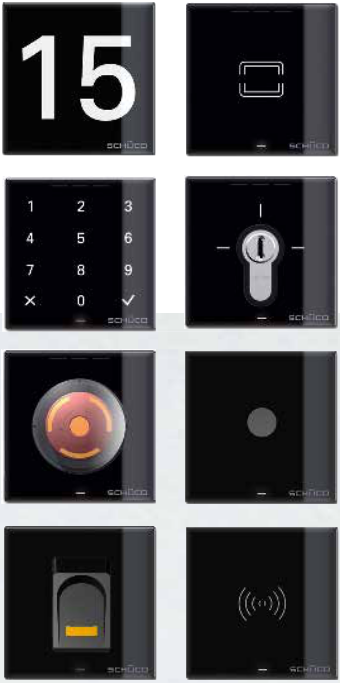
Be in control of who comes into your home. Door entry systems are no longer novelties, they are encountered everywhere. Not simply because they offer extra security (which they do) but because they make life more comfortable.
Fingerprint recognition entry for example, means that you eliminate the irritation and hassle of a mislaid key. And an entrance camera and motion-sensor-connected LED lights let you see instantly who's at the door.
The problem with many systems, however, is that they use a range of individual modules sharing no common design. The resulting 'patchwork' of unmatched units is unlikely to be visually very pleasing
Instead, look for a system whose modules are all incorporated into the door itself, thereby actively enhancing the appearance of your front entrance. Functionality linked to BMS and telephone systems is an additional bonus.
All thresholds are not the same. Some locations mean that they need to be higher to prevent water getting in, while others are perfect for a flush threshold that offers maximum comfort, a barrier-free entry and prevents anybody tripping.
In some instances, you will have to balance aesthetics against weather performance. For example, while a flush threshold may look very elegant, it would be the wrong choice if the land outside slopes towards your house. In that instance, a stepped threshold that will prevent rainwater running under a door would be the best choice.
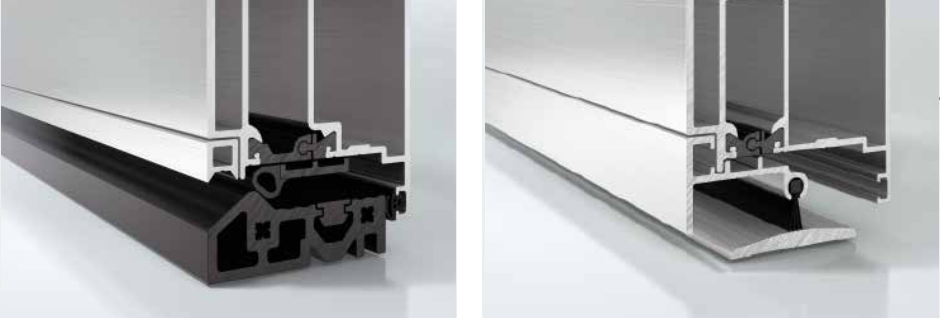

Even here, you have options. You may like a fully concealed hinge option with a 180 ° opening angle. It offers effective protection against dirt and weathering and great design, security and durability in one package.
An economical alternative is to fit barrel hinges whose sleek, slimline design blends into the door profile. They look good but are visible.
Of course, you may well prefer a traditional surface-mounted hinge. And why not? Just as long as it's a well-engineered quality component that will go on performing faultlessly, in all weathers, year-in, year-out.
There's plenty of choice: look at each door individually and make a decision on the fitting that's most appropriate.
Locks come in all shapes and sizes and it's only right that you be given the opportunity to choose the level of security that's right for you. Options generally available include 1-, 3- or 5-point locking, depending on the degree of protection you're after.
Sophisticated new systems offer keyless 4-point locking with a fifth bolt engaged if the key is also turned. But do remember that it's the strength of all the door's components that ultimately determines its level of security.
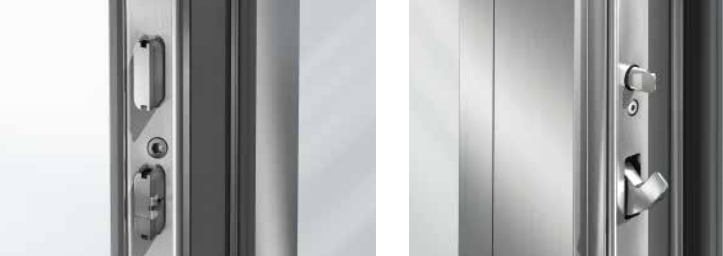
Plenty. Because there are so many options to consider including the methods of opening, operating and locking the door.
But above all, the key consideration is Quality. Check for rigidity in the frame, a tight, draught-free fit at the central meeting stile and doors that run effortlessly with only the minimum effort from you.
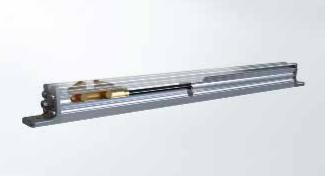
In recent years, new features have been introduced to ensure the safe operation of sliding doors. It makes sense to fit these wherever possible.
Current options include fittings that use a controlled braking action to stop the door before it reaches the frame, so preventing fingers getting caught. A similar device can ensure that even heavy vents automatically close softly into the outer frame replicating the soft-close action that is now standard for drawers in most modern kitchens.
Traditionally, a sliding door has always been hand-operated, but modern technology has allowed automatic electronic operation via concealed motors to become wide-spread.
This advance means that even large and heavy units can be opened, closed and locked at the touch of a button. It also enables sliding doors to be controlled by a central whole-building management system with resulting advantages in security and energy use. Look for state-of-the-art systems that can be managed in this way.
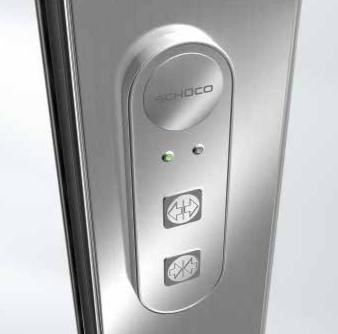
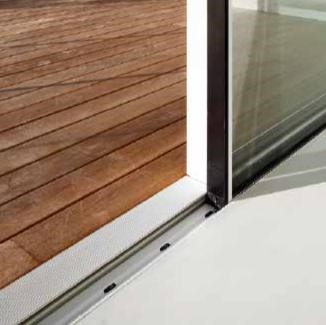
For a sliding door system, the choice of threshold is important. As we have already seen, a flush threshold may be desirable in terms of ensuring an absence of stubbed toes, but it may need additional drainage if the patio area is exposed to high winds or driving rain.
In any event, the tracks will always collect sand and dust so a sliding door that has a track that can be lifted out for easy cleaning is highly desirable. Regular cleaning of the tracks will ensure that the door always runs freely.
Sliding doors can slide in a number of different ways.
In addition to a simple pull-across movement, it is possible to specify a lift/slide option that offers improved weather-tightness and acoustic performance.
Another variation is tilt/slide where, as with the tilt/turn window, there are two ways of operating the door. Tilting it inwards allows ventilation while simultaneously giving weather and burglar protection.
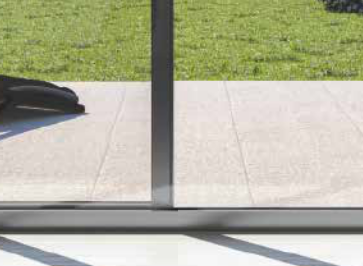

While a single or double track will be perfect for most openings, a particularly large opening may necessitate a third — or even more — tracks.
Check that the system you choose offers this option and also check the maximum buildable sizes and glass weights it can handle. More robust systems may allow you to use two tracks rather than three, which will maximise your uninterrupted views and may reduce your costs.
The particular joy of a sliding door is the light that it brings into the house and the views that are visible through it. It follows that a door giving maximum transparency is what you should be looking for.
Many contemporary systems conceal the frame in the outside walls and feature narrow central meeting stiles giving you almost the same looks and view regardless of whether the doors are open or shut.
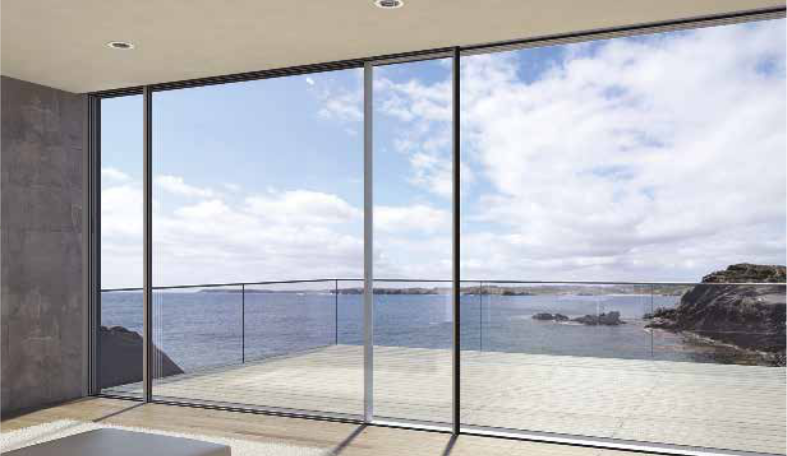
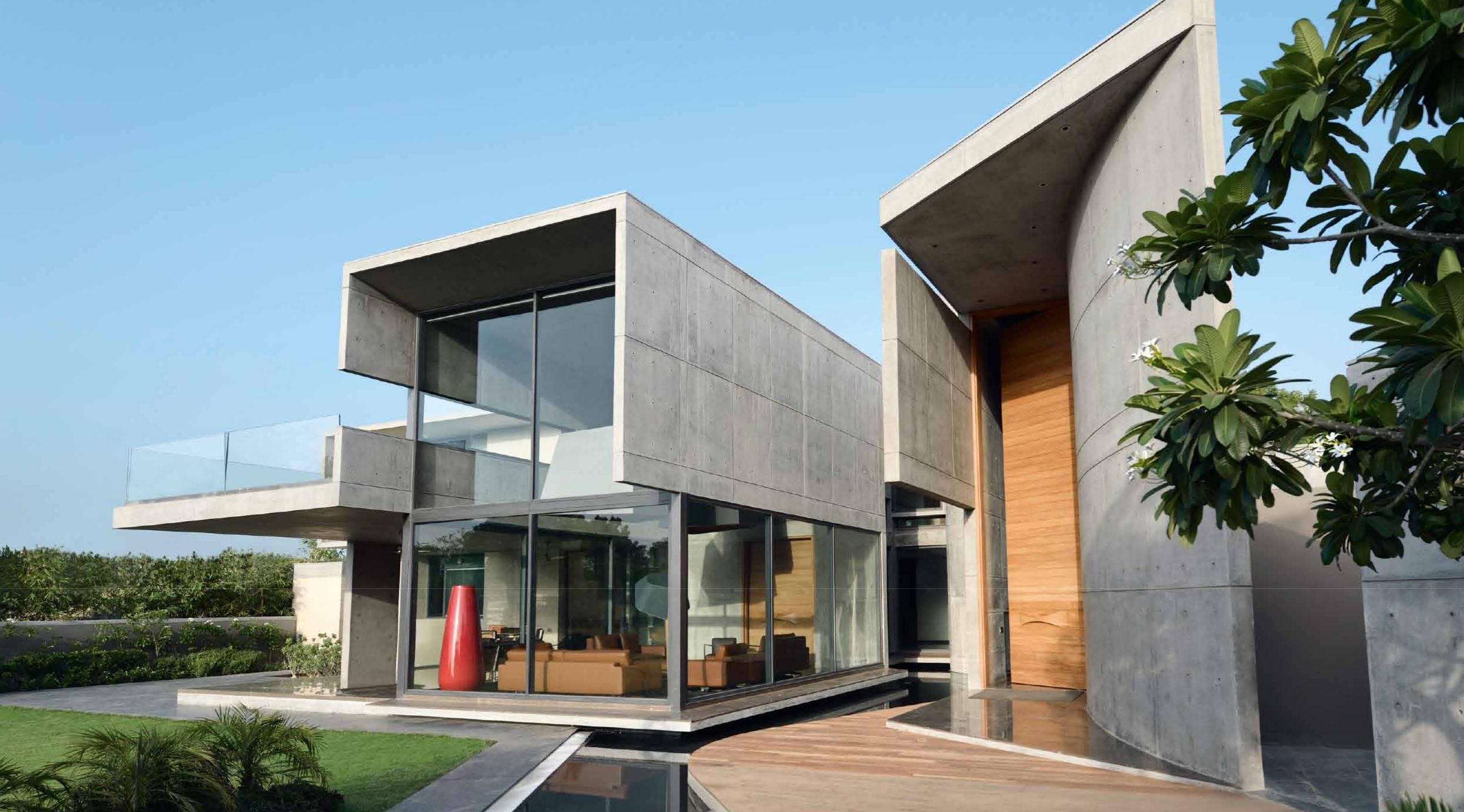
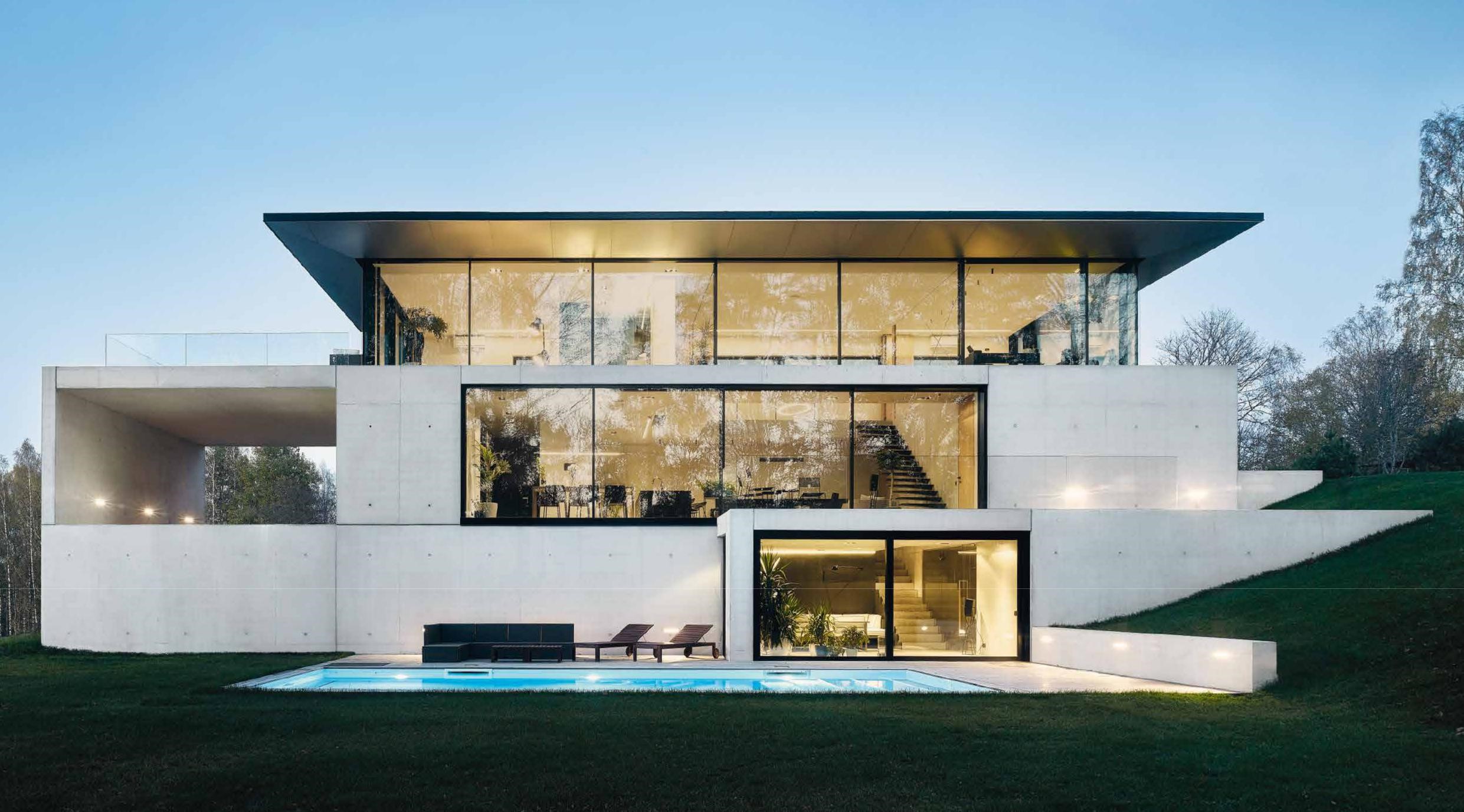
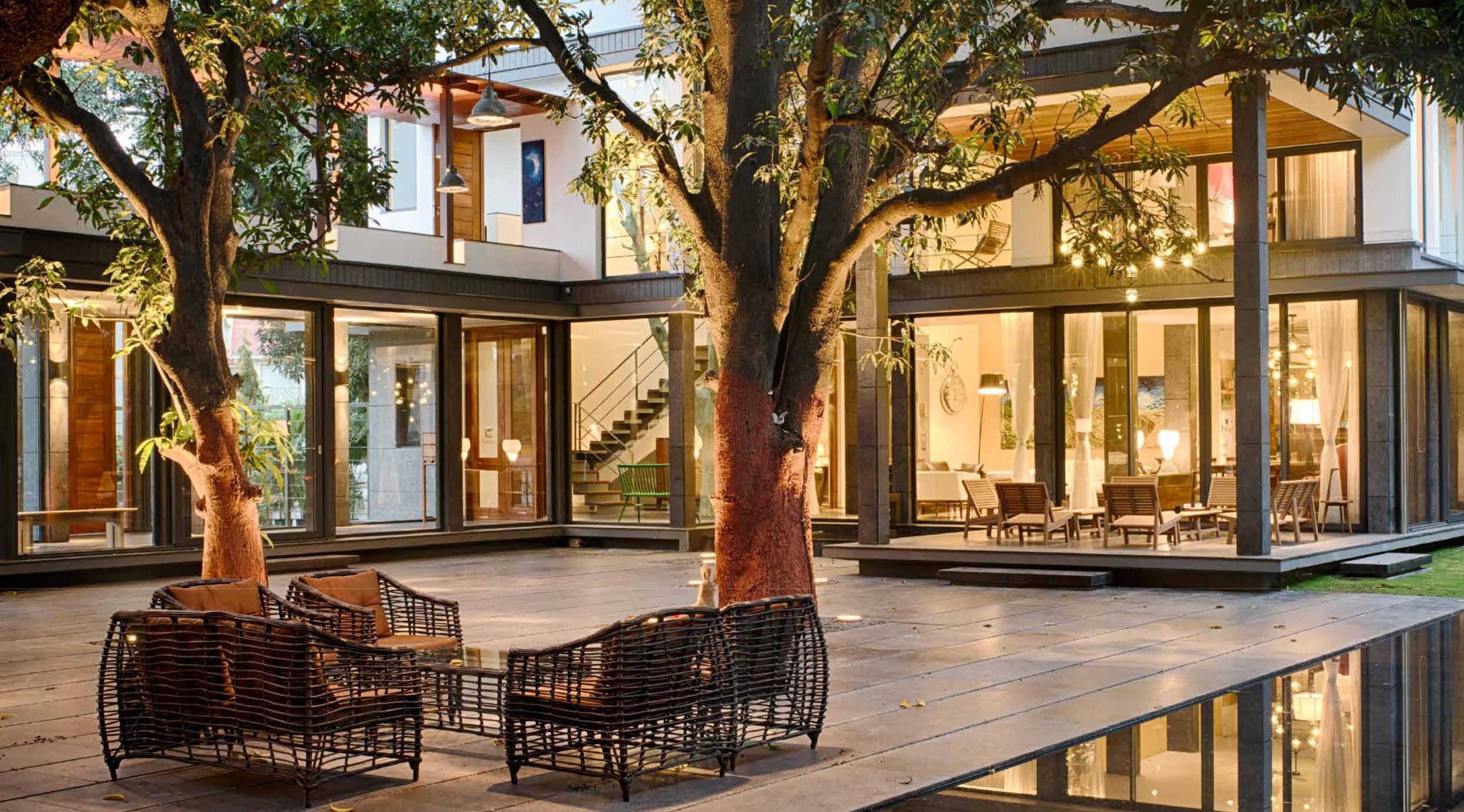
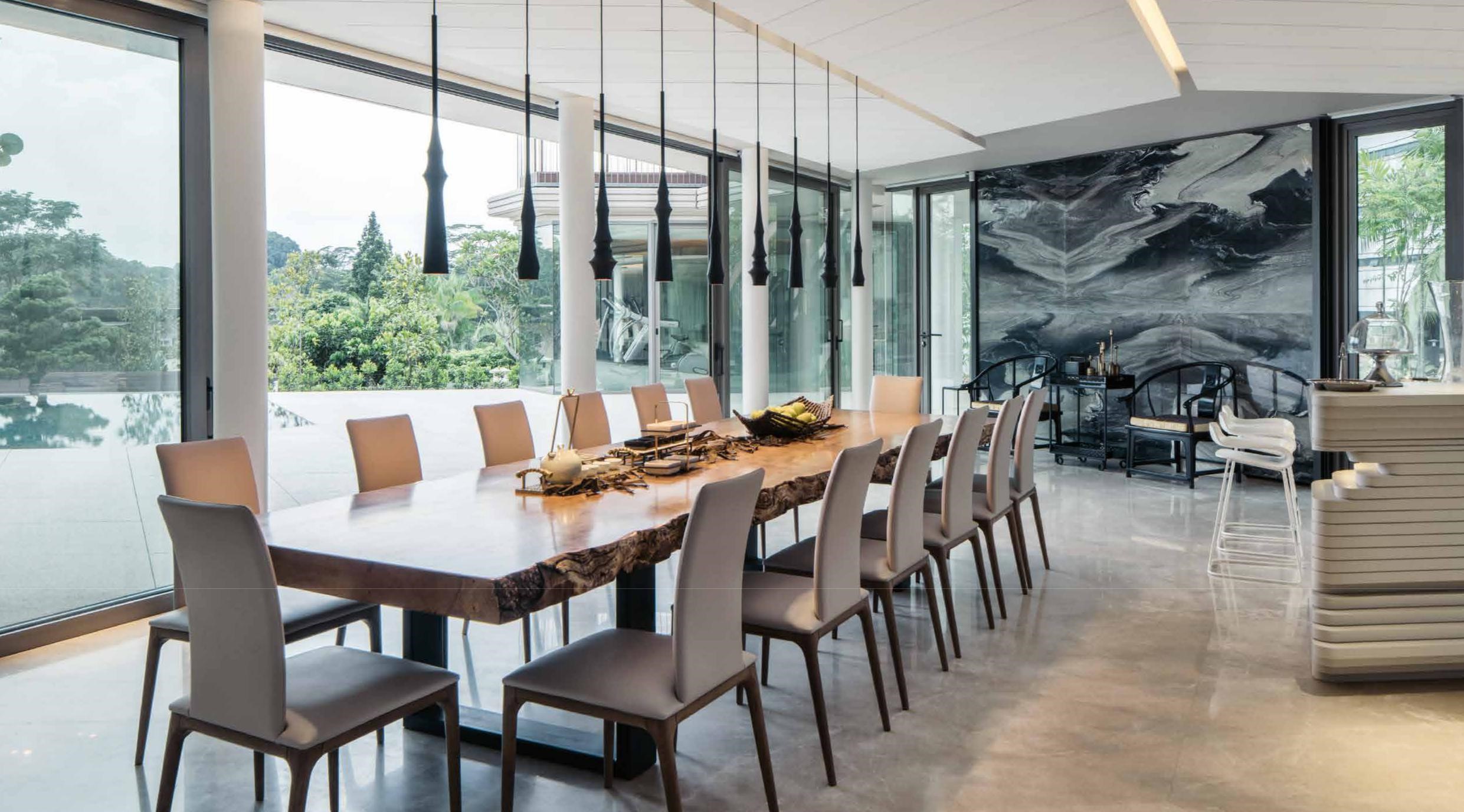
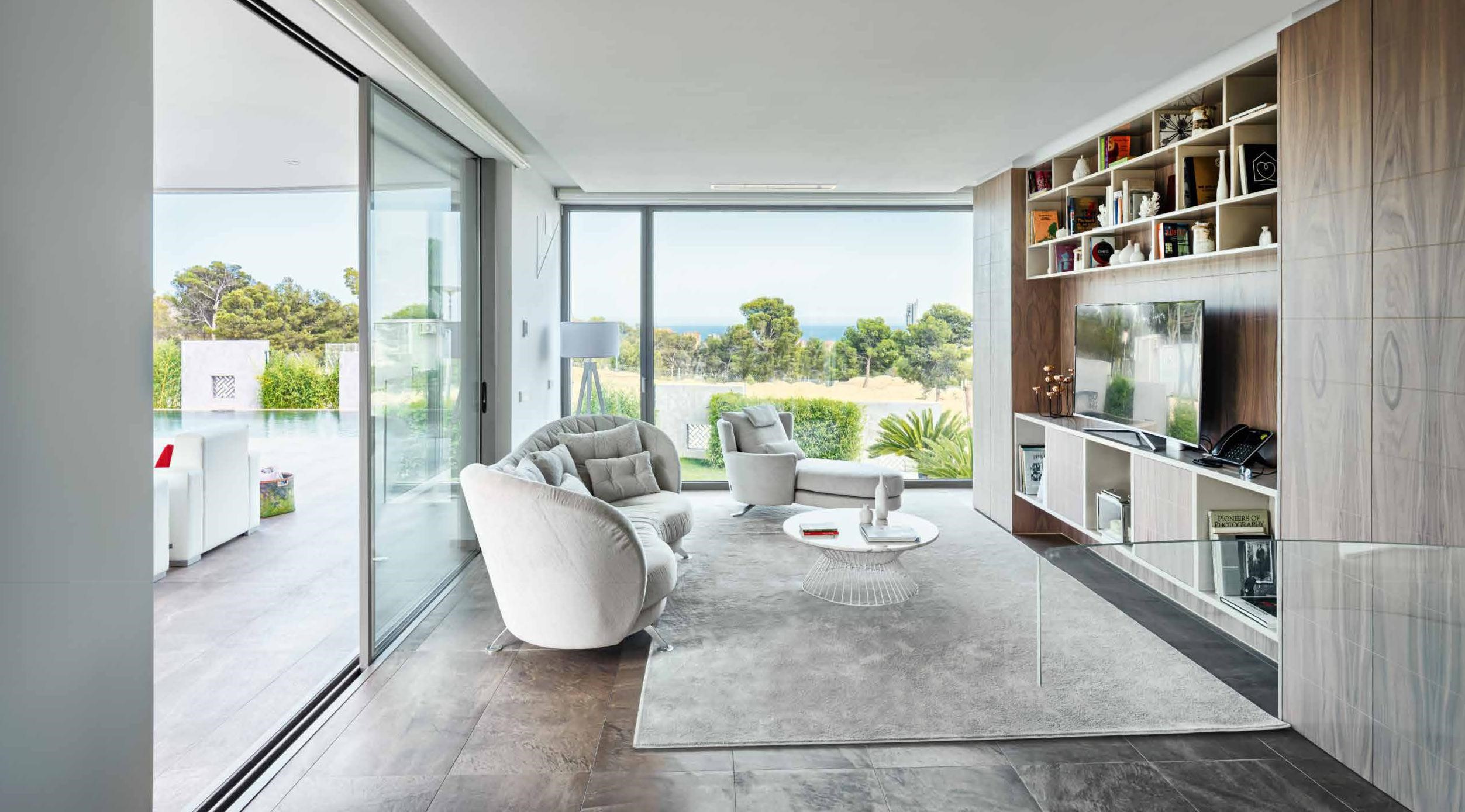
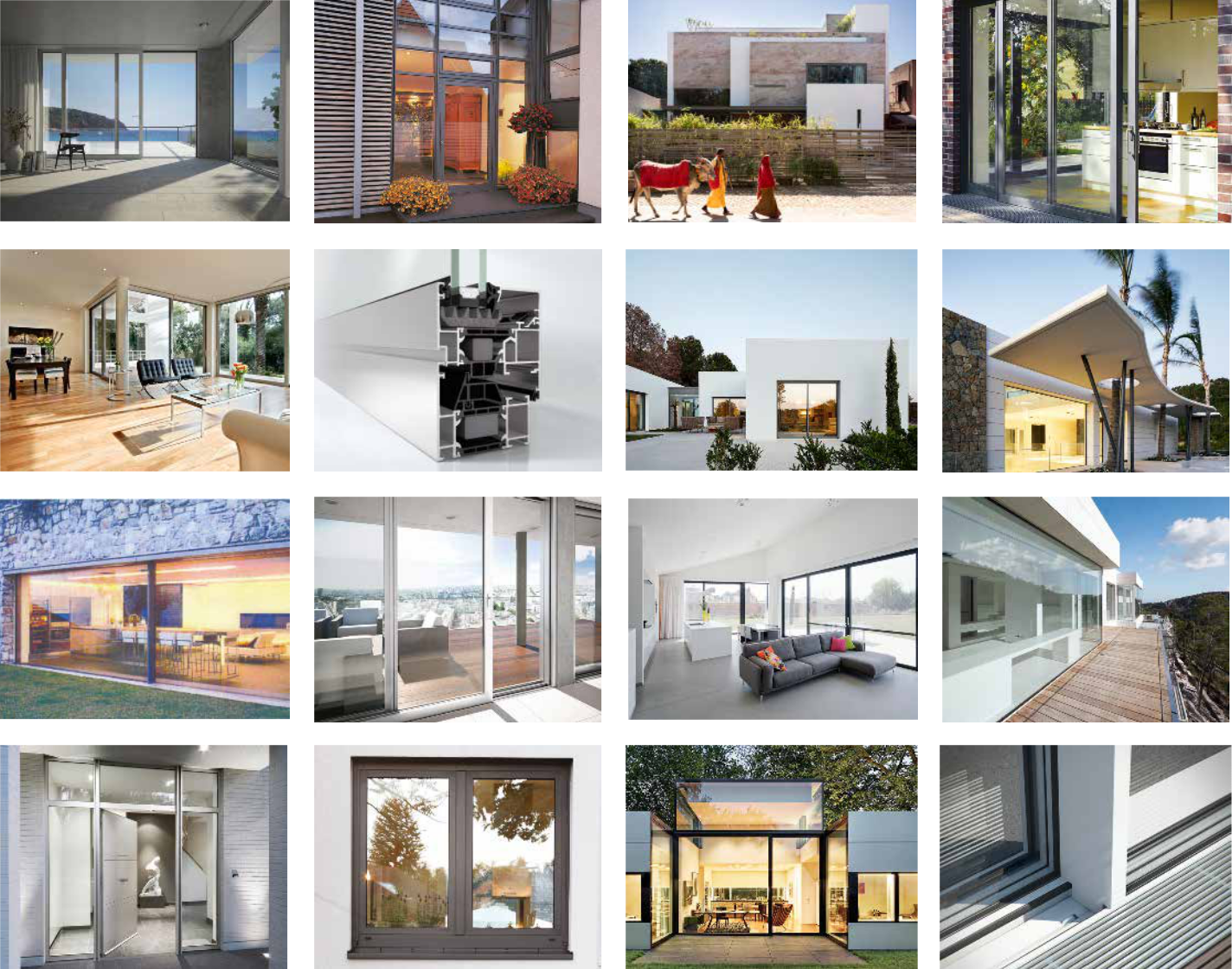
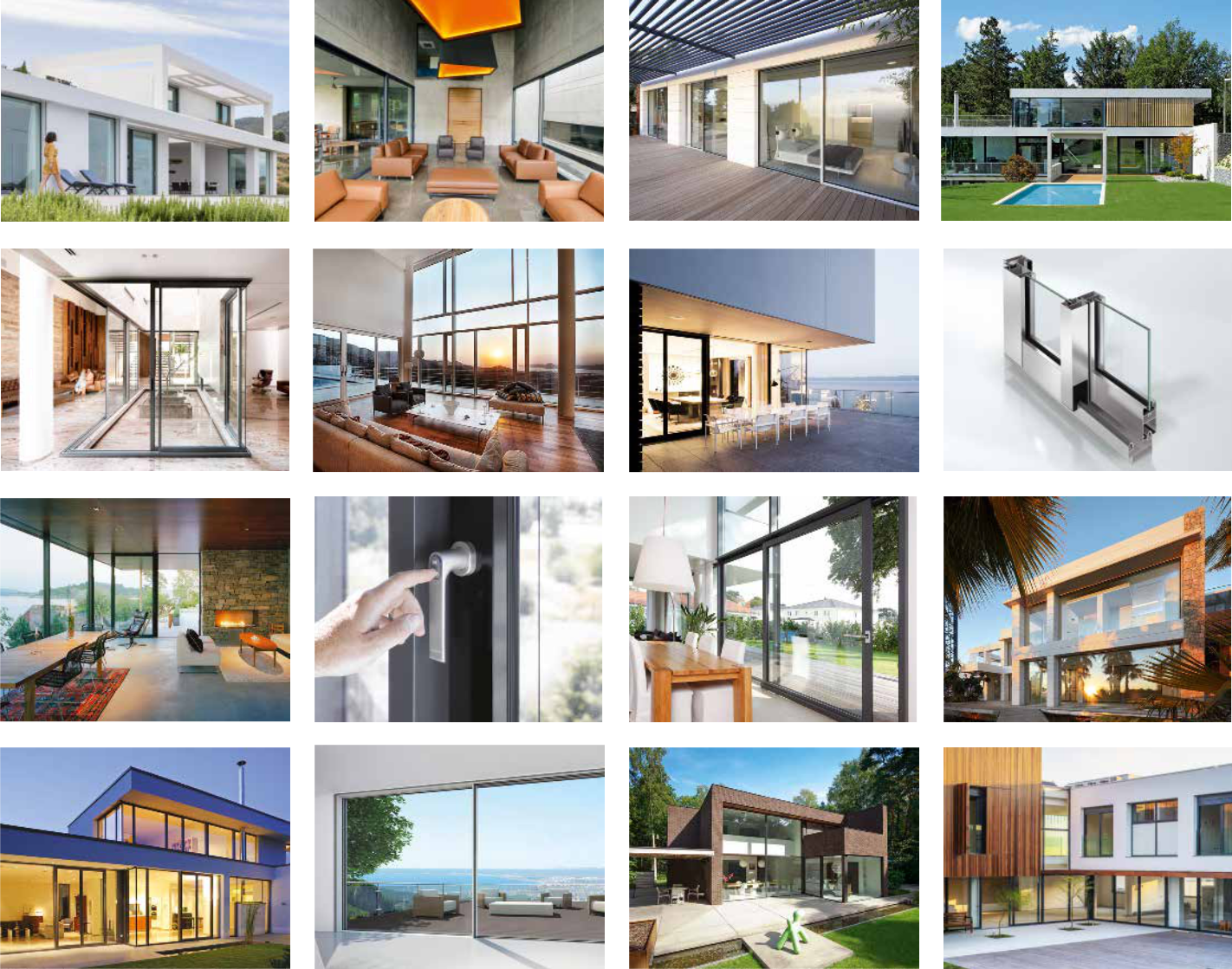
Windows, doors and glazing matter a great deal! And what better way to enhance your home than to plan them properly. Playing an important role in the design, comfort, security and sustainability of your home these components not only add financial value but also value to your lifestyle.
Creating awareness through the wide range of products on offer, you can now easily question the specialists and single out the quality answers.
Bear in mind the four criteria that you hope to satisfy when digging deeper: good design, comfort, security and long-term sustainability.
The choices you make today impact your home and your way of life in a major way for decades to come, contact us at The Craftsmen Today!
Welcome to The Craftsmen
How can we help you ?
